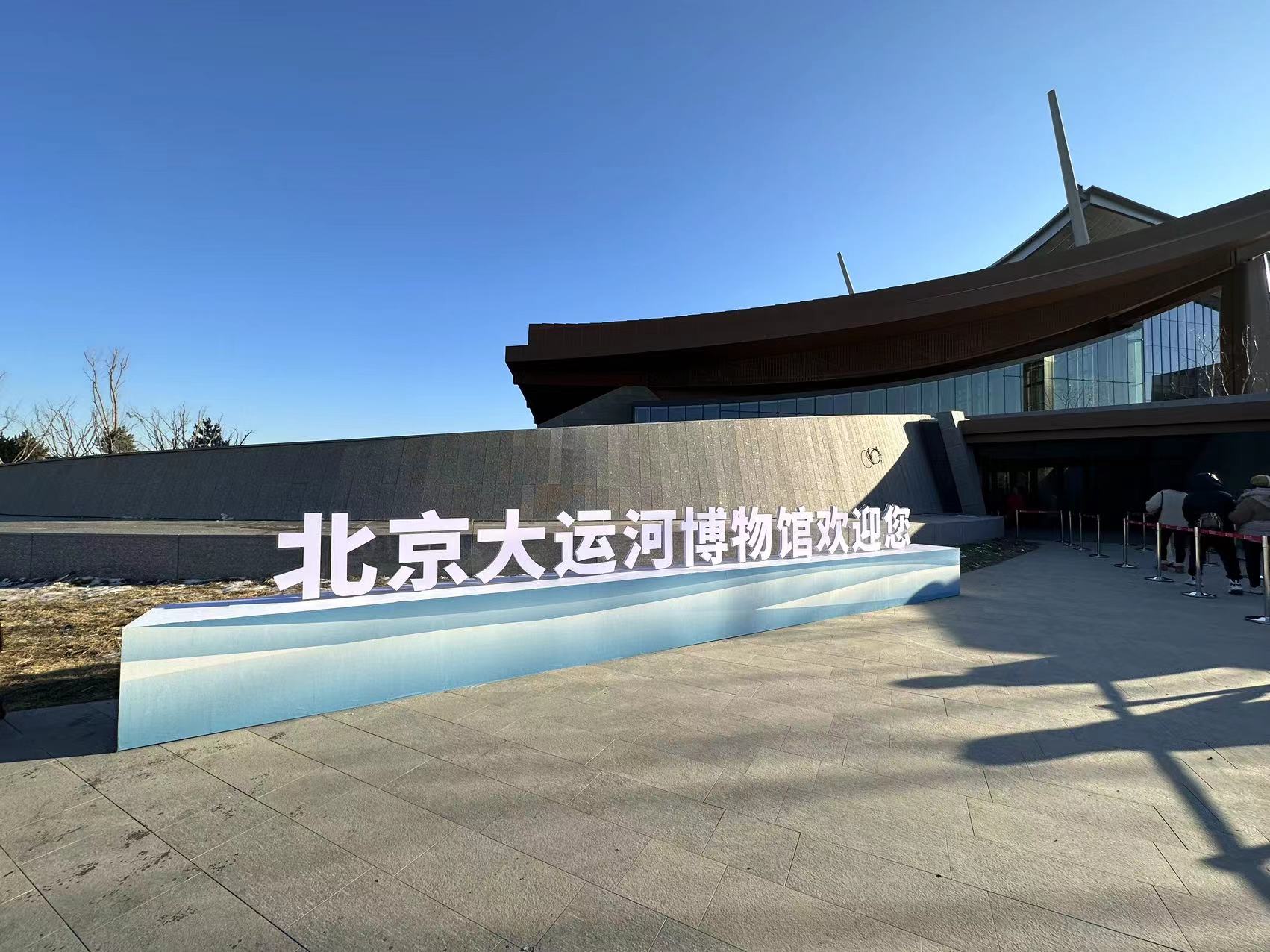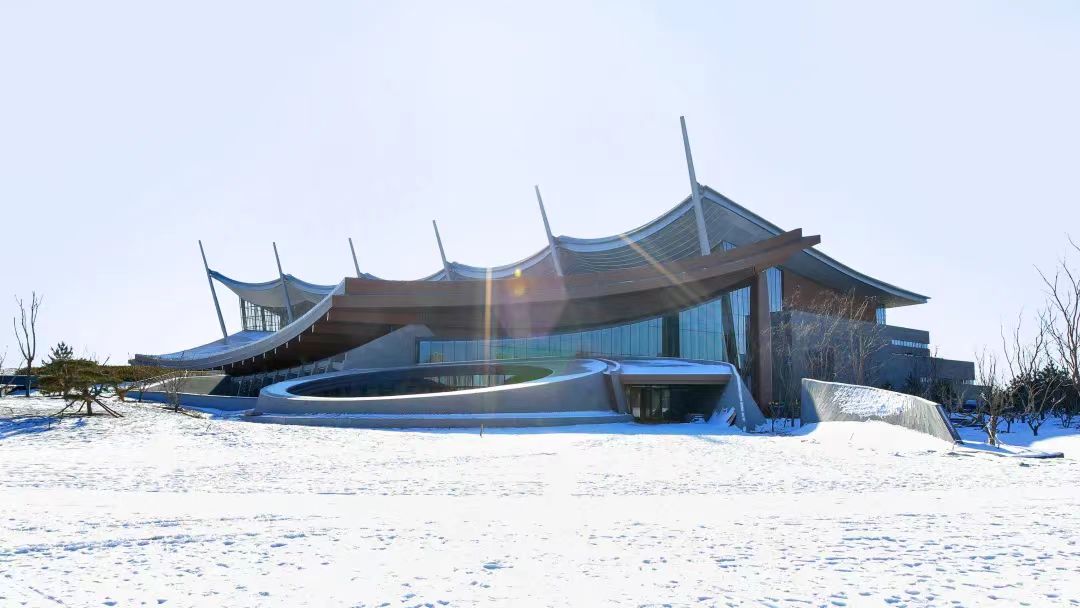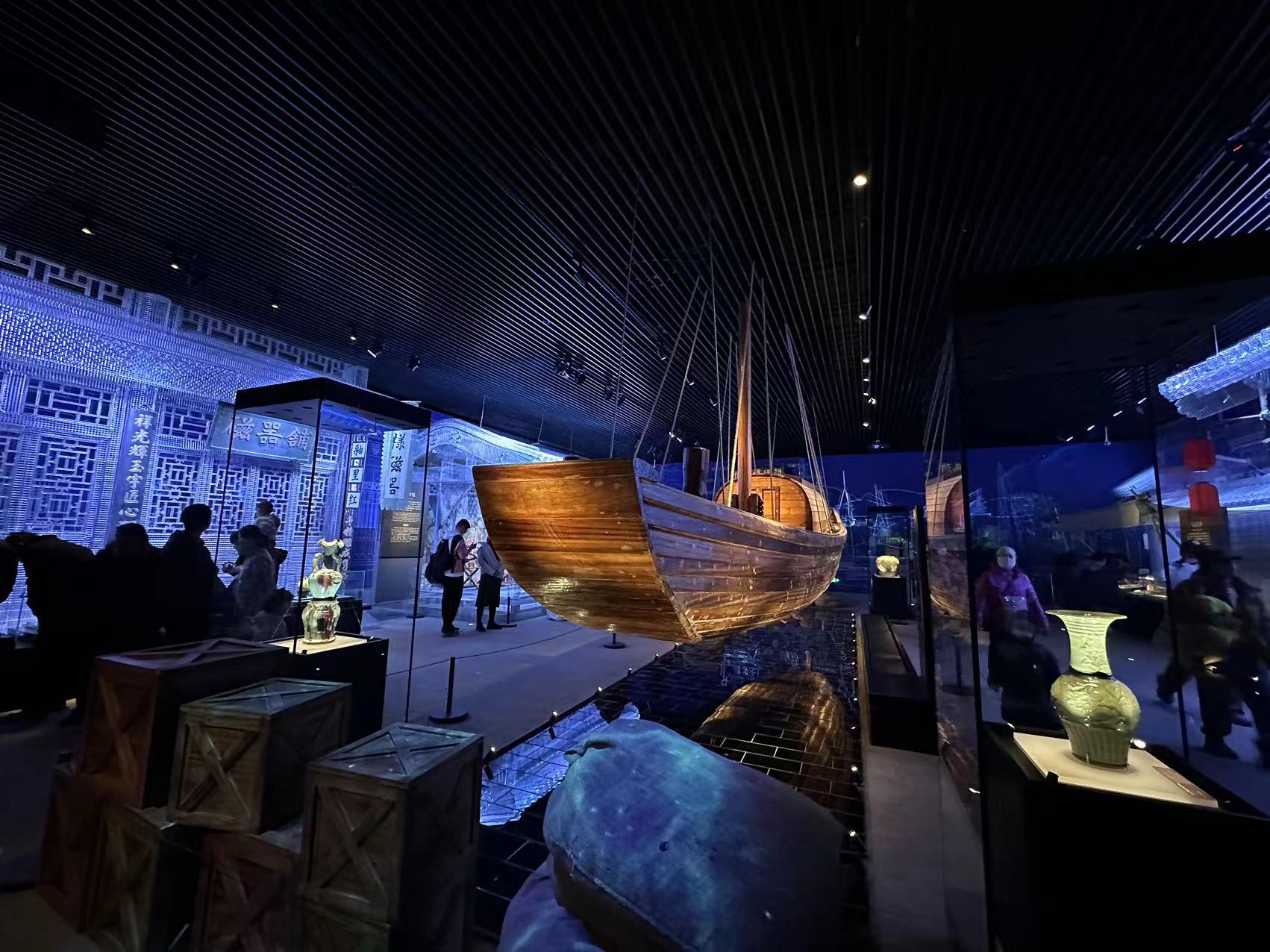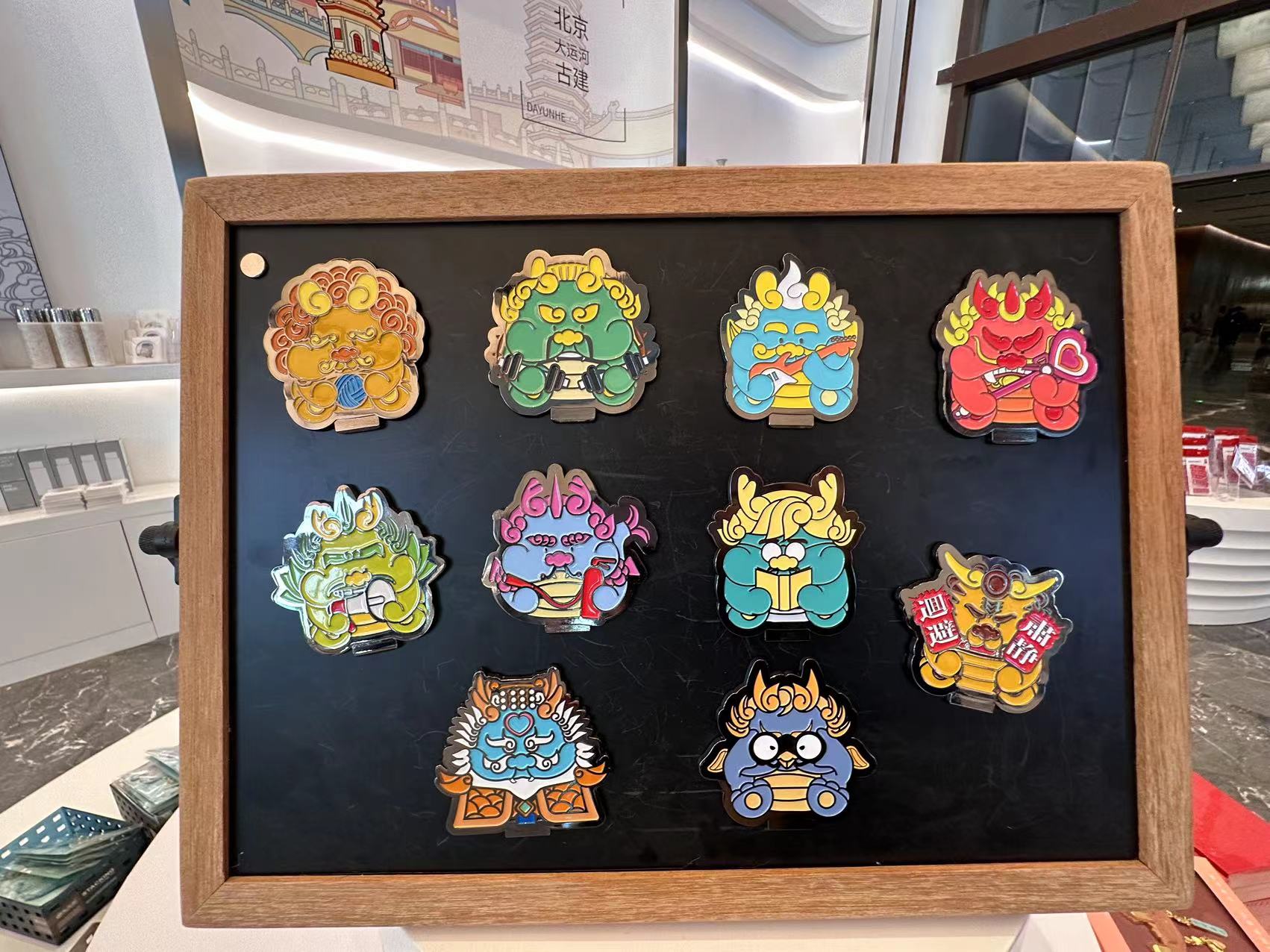Beijing Grand Canal Museum: Tell the story of the canal and outline the millennium elegance
Accompanied by the sound of water oars, the Grand Canal Museum in Beijing winds its way from the depths of history. At the end of 2023, after four years of construction, the three major cultural buildings of Beijing Grand Canal Museum (Capital Museum East), Beijing Art Center, and Beijing City Library located in the sub-center of Beijing will be officially opened to the public.
Among them, the Beijing Grand Canal Museum, as an important project to promote the integrated development of culture and tourism along the Grand Canal, has just opened and has become a popular location for the public to check in. The museum is full of enthusiasm and people, and has become another important place in China to display the history of canal culture and its evolution.

The design of the museum is "ingenious", integrating the cultural elements of the canal into it, making people feel like they are crossing through, as if the "canal boat" of the past is slowly sailing.

The total construction area of the museum is 99,700 square meters, which is composed of three parts: the shared hall, the exhibition building and the leisure water street, among which, the shared hall is like a boat, solid and heavy, the roof of the main building is shaped like a giant sail, raised high, and the leisure water street is parallel, which is the artistic embodiment of the boat, sail and water elements in the ancient canal picture.
Thousands of miles from north to south, Runyouyan Fenghua. In the museum, the "canal boat" - the element of the boat is everywhere. Among them, there are copper sailboats led by Zhu Bingren, the representative inheritor of national intangible cultural heritage bronze carving skills, on the water street, which are the cao transport barge, the foreign boat, and the cao boat from the outside to the inside. Whether it is the structure, size, equipment, and modeling, the image is realistic, and the details reproduce the appearance of ancient Chinese Cao transport ships, attracting the public to check in and take pictures.
It is particularly noteworthy that the museum fully implements the three-star standard of green buildings, makes full use of clean energy, and demonstrates energy conservation and carbon reduction. The supply of cold and heat sources comes from the centralized energy station, and the ground source heat pump and water cold storage and heat storage system of gas boiler and chiller peak shaving are used to meet the conventional needs of air conditioning for summer cooling and winter heating, and the heat load configuration of the entire museum building is not less than 60%; According to comprehensive calculations, it can reduce carbon dioxide emissions by nearly 5,000 tons per year.
As the world's longest and largest ancient canal, the Grand Canal has a history of more than 2,000 years, witnessing the important course of social changes in ancient China, writing a magnificent chapter in the development of Chinese civilization, and is an important symbol of China's excellent traditional culture.
The museum's permanent exhibition, "Jinghua Tonghui Canal Yongji - Beijing and the Grand Canal History and Culture Exhibition", uses more than 1,000 cultural relics and artworks to restore and vividly display the evolution of the Grand Canal, the close relationship between the Grand Canal and Beijing, the historical features and humanistic values along the canal.
The exhibition adopts the historical periodization method, which is divided into 8 units according to the development characteristics of the Grand Canal, and the themes are also different from different dynasties, such as the prehistoric to the Northern and Southern Dynasties as "the beginning of the river, river and canal water transportation", the Yuan Dynasty as "most of the established one line", and now the Grand Canal is "the symbiosis of the city and the river".

The scenery along the canal is also represented in the artworks. In the 7th exhibition hall on the second floor of the museum, there is a 27.4-meter-long "Beijing Grand Canal Range Rover Scroll", which is a painting scroll created by 8 artists from the Beijing Fine Art Academy for the museum, with delicate and vivid brushstrokes, depicting the magnificent scenery of the northern canal section of the Grand Canal starting from Baifu Spring, flowing through the center of Beijing, the sub-center of Beijing, and then extending to Tianjin.
The picture skillfully integrates the historical and cultural heritage along the route and the landmark buildings of Beijing, allowing the audience to follow the artist's perspective to experience the ancient style and modern changes of the Grand Canal, and feel the rich cultural connotation contained in the Grand Canal.
"It's good, it's fun, it's good. This is the common feeling that many visitors have after visiting the museum. There is no other reason, it is all because the museum makes full use of sound and light elements such as projection, video, and exhibition boards, and is full of black technology, and many visitors linger in it and indulge in it for a long time.
For example, in the permanent exhibition, there are many exhibition halls that use immersive and interactive experiential elements. Among them, in the third unit "Liaojin Jiandu Caoyun Tongji", there is a "moving" "Qingming Riverside Map", touch the screen with your fingers, "Qingming Riverside Picture" will move in front of your eyes, and in the eighth unit "City and River Symbiosis", there is an immersive interactive hall, the combination of art and technology, telling the story of the Grand Canal like a painting.
Located on the third floor, the "More than the Canal - Immersive Experience Exhibition" adopts the largest three-dimensional diffraction system installation in a domestic museum, allowing the audience to travel through time and space, enjoy the Grand Canal, and experience the rich history and culture of the Grand Canal and Beijing City in a 3D cool space.
In addition, the existence of the Cultural and Creative Museum and the Canal Book House has made the canal culture not only remain in the hearts of the audience, but also go to the side.

Located on the first floor of the cultural and creative hall, refrigerator magnets, badges, handbooks, thermos cups, sachets, canvas bags and other products are all available, dazzling. Many viewers were busy collecting stamps and punching cards with their children, which was very popular. The Canal Book House is exquisitely designed, and the shared open reading space allows people to immerse themselves.
It is understood that in the future, the museum will also launch a variety of theme activities, presenting traditional arts such as folk songs, operas, and operas, so that the audience can immerse themselves in the cultural atmosphere of the Caoyun era.
Inheriting the thousand-year-old history and culture and telling the story of the Beijing Canal, this "canal boat" is shouldering the historical mission and writing a unique historical chapter.







